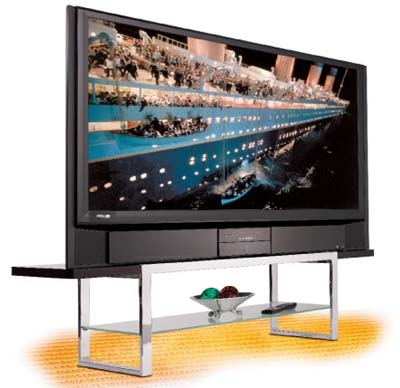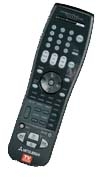Best & Brightest Page 4

Mitsubishi 62-inch 1080p DLP HDTV by Philip Ryan
Mitsubishi has built a reputation as one of the "go-to" brands for big-screen televisions. Its high-end Diamond series rear-projection TVs have long been among the best RPTVs on the market. So it's no surprise that the company's current crop of Diamond RPTVs are all 1080p DLP sets with "wobulating" chips that effectively offer the potential for 1,920 x 1,080-pixel resolution (see "Pixel Magic"). That makes them tops in their ability to display detail.
Of course, resolution and picture quality aren't everything. Mitsubishi also packs its TVs with features, and the model reviewed here - the 62-inch WD-62827 - is no exception. Key among the extras are the company's NetCommand system for controlling multiple A/V components onscreen and TV Disc - a built-in 160-gigabyte hard drive that can hold up to 16 hours of high-def programs from your CableCARD connection or an off-air antenna.
Compared with some DLP-based RPTVs, the WD-62827's cabinet is fairly deep (20 inches). But its elegant, understated style works in its favor. The cabinet is completely black, which helps improve perceived contrast. The fully backlit remote control, with large, easy-to-read labels, is wider than most but still fit comfortably in my hand.
 SETUP Inputs abound on the WD-62827's rear panel, but the dual HDMI ports are the sexiest. Both accept regular signals up to 1080i resolution, and one also accepts PC input up to 720p resolution. There are also three HD-compatible component-video inputs. A CableCARD slot lets you watch digital cable without an external cable box, in which case the free TV Guide On Screen replaces your cable carrier's onscreen guide. But as we've noted before, it doesn't load reliably in every locale and will require you to manually reorder the channels to match your cable system's lineup.
SETUP Inputs abound on the WD-62827's rear panel, but the dual HDMI ports are the sexiest. Both accept regular signals up to 1080i resolution, and one also accepts PC input up to 720p resolution. There are also three HD-compatible component-video inputs. A CableCARD slot lets you watch digital cable without an external cable box, in which case the free TV Guide On Screen replaces your cable carrier's onscreen guide. But as we've noted before, it doesn't load reliably in every locale and will require you to manually reorder the channels to match your cable system's lineup.
I didn't love the Mitsubishi's menus. There are convenient Video and Audio menu buttons on the remote, but you then have to press the button repeatedly to step through the adjustment options. I prefer scrolling through lists that let you see all your options up front.
Out of the box, I selected the WD-62827's Natural preset and Low color temperature as providing the most accurate picture, but the image still had a slightly red cast overall, which was most obvious in white or gray sections of the picture. I was able to eliminate that with a few tweaks in the service menu. Once fixed, the set's ability to maintain this neutral baseline across a series of increasingly brighter images - what's called its grayscale tracking - was excellent.
More problematic were the red parts of the picture, which were oversaturated compared with other colors. Though I was able to minimize that effect using the PerfectColor feature in the user menu - which allows individual adjustment of the red, green, blue primary colors as well as secondary colors - it couldn't be fully tamed, and there were no service-menu controls to fall back on. Still, this issue wasn't severe enough to be a problem for most viewers.
Mitsubishi's SharpEdge should be kept off to avoid artificial edge enhancement, as should the Deep Field Imager function, which is supposed to optimize contrast as image content changes but sometimes ended up brightening the blacks. The video noise-reduction feature worked surprisingly well, so I left it on.













































